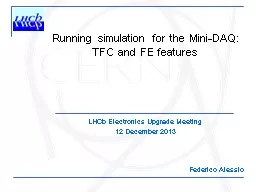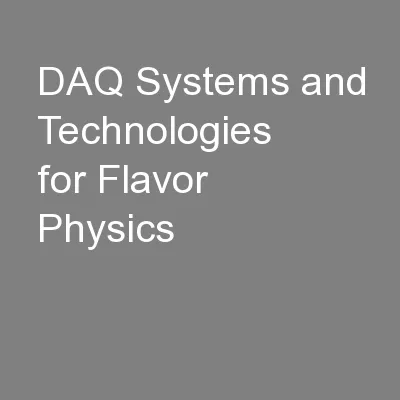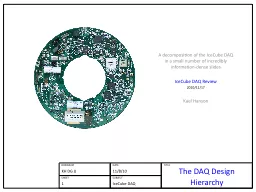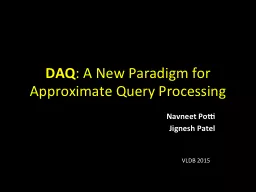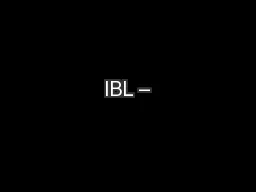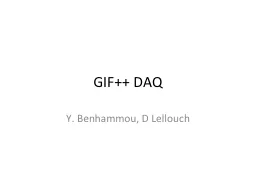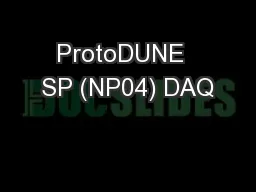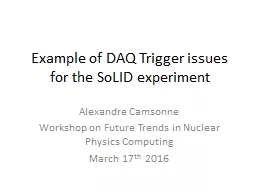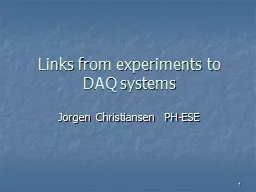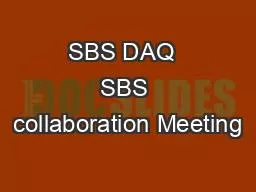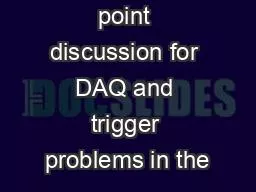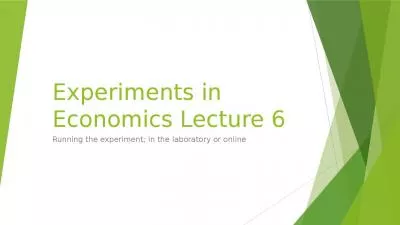PPT-Running simulation for the Mini-DAQ:
Author : eatsyouc | Published Date : 2020-08-06
TFC and FE features LHCb Electronics Upgrade Meeting 12 December 2013 Federico Alessio 2 Simulation framework Data Processing LLT decision MEP building
Presentation Embed Code
Download Presentation
Download Presentation The PPT/PDF document "Running simulation for the Mini-DAQ:" is the property of its rightful owner. Permission is granted to download and print the materials on this website for personal, non-commercial use only, and to display it on your personal computer provided you do not modify the materials and that you retain all copyright notices contained in the materials. By downloading content from our website, you accept the terms of this agreement.
Running simulation for the Mini-DAQ:: Transcript
Download Rules Of Document
"Running simulation for the Mini-DAQ:"The content belongs to its owner. You may download and print it for personal use, without modification, and keep all copyright notices. By downloading, you agree to these terms.
Related Documents

